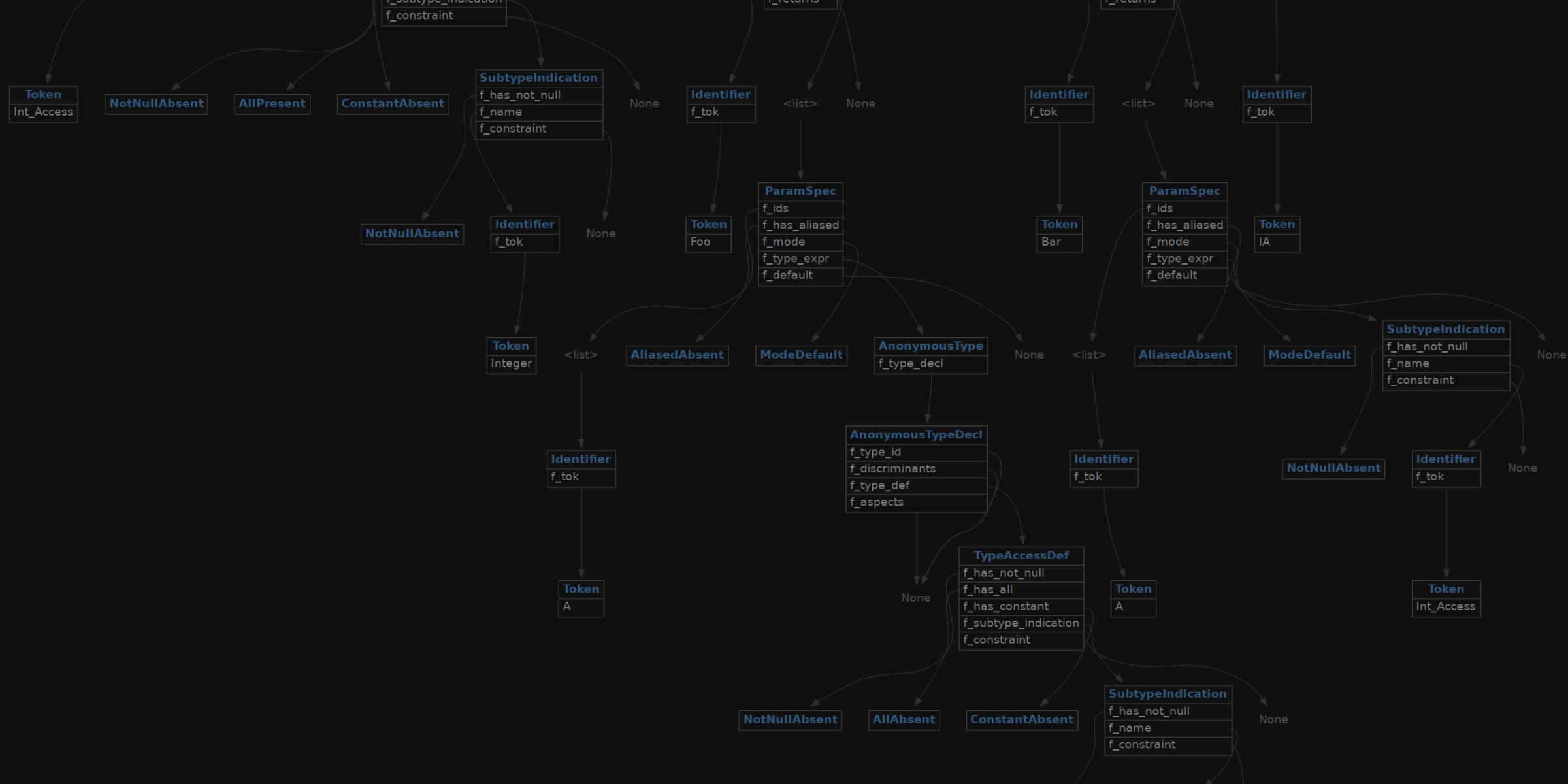Introducing Libadalang
by Raphaël Amiard , Pierre-Marie de Rodat –

Show me your abstract syntax tree
AdaCore is working on a host of tools that works on Ada code. The compiler, GNAT, is the most famous and prominent one, but it is far from being the only one.
Over the years we have done tools with a variety of requirements regarding processing Ada code, that we can put on a spectrum:
Some tools, like a compiler, or some static analyzers, will need to ensure that they are working on correct Ada code, both from a syntactic and semantic point of view.
Some tools, like a source code pretty-printer, can relax some of those constraints. While the semantic correctness of the code can be used by the pretty printer, it is not necessary per-se. We can even imagine a pretty-printer working on a syntactically incorrect source, if it ensures not to change its intended meaning.
Some other tools, like an IDE, will need to work on code that is incorrect, and even evolving dynamically.
At AdaCore, we already have several interleaved tools to process Ada code: The GNAT compiler, the ASIS library, GNAT2XML, the GPS IDE. A realization of the past years, however, has been that we were lacking a unified solution to process code at the end of the previously described spectrum: Potentially evolving, potentially incorrect Ada code.
Libadalang
Libadalang is meant to fill that gap, providing an easy to use library to syntactically and semantically analyze Ada code. The end-goal is both to use it internally, in our tools and IDEs, to provide the Ada-aware engine, and to propose it to customers and Ada users, so that they can create their own custom Ada aware tools.
Unlike the tools that we currently propose to implement your own tools, Libadalang will provide different levels, allowing a user to work on a purely syntactic level if needed, or access more semantic information.
We will also provide interfaces to multiple languages:
You will be able to use Libadalang from Ada of course.
But you will also be able to use it from Python, for users who want to prototype easily, or do one off analyses/statistics about their code.
We will in a following series of blog posts showcase how to use Libadalang to solve concrete problems, so that interested people can get a feel of how to use Libadalang.
Stay tuned
Libadalang is not ready for public consumption yet, but you can see the progress being made on GitHub: https://github.com/AdaCore/lib...
Stay tuned!

